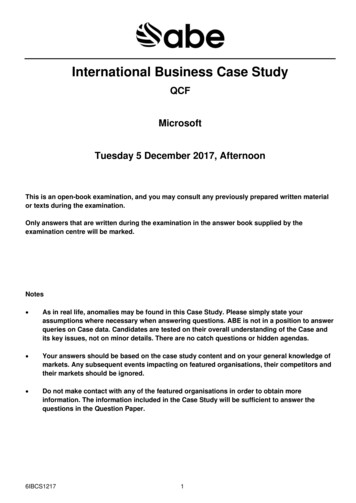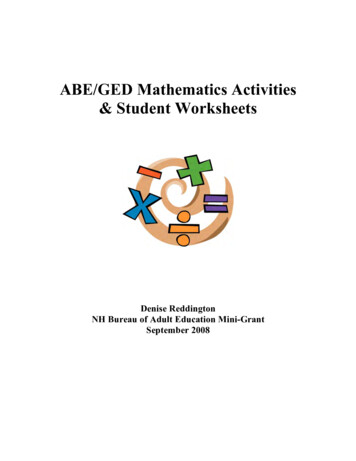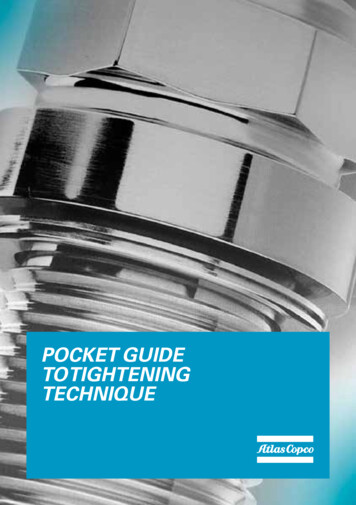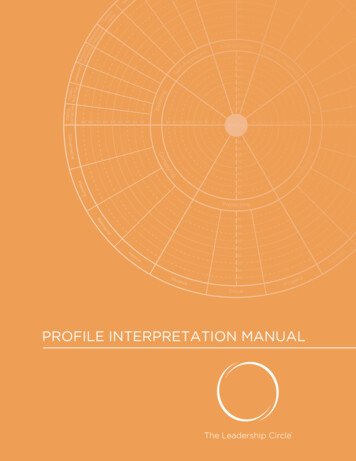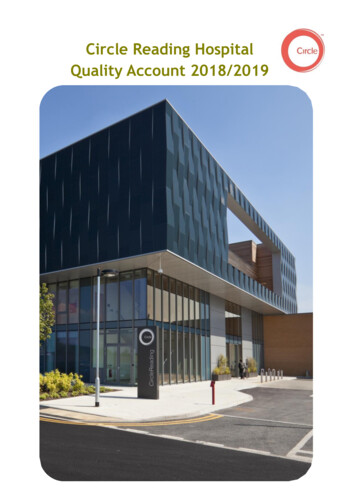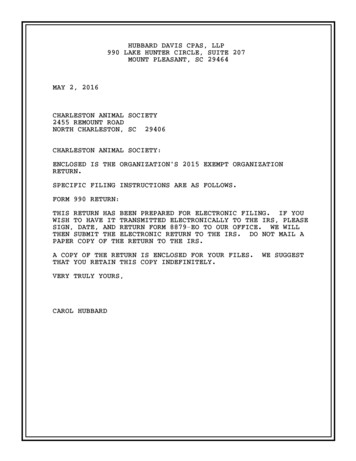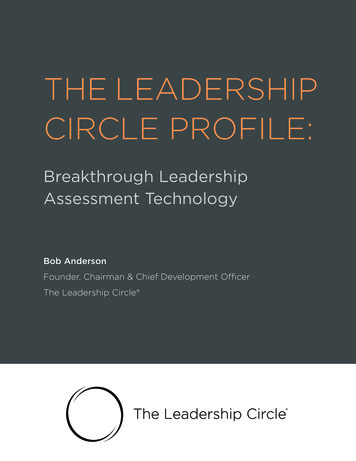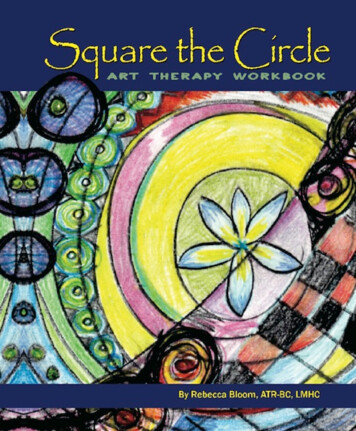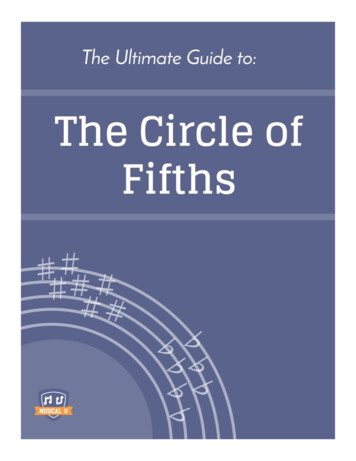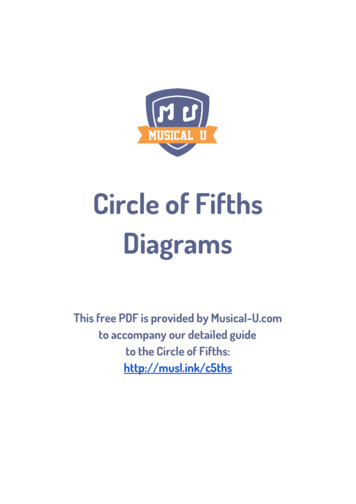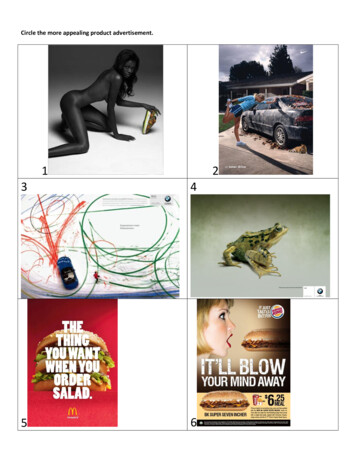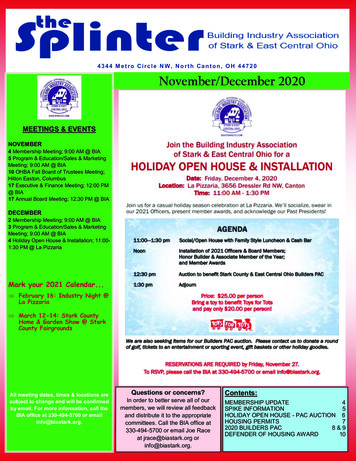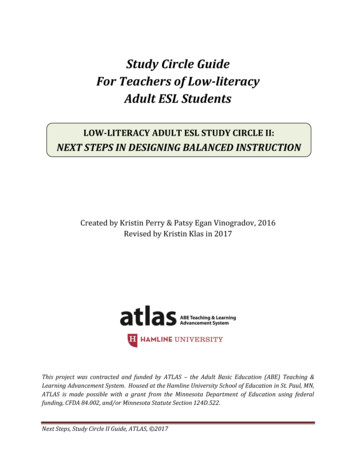
Transcription
Study Circle GuideFor Teachers of Low-literacyAdult ESL StudentsLOW-LITERACY ADULT ESL STUDY CIRCLE II:NEXT STEPS IN DESIGNING BALANCED INSTRUCTIONCreated by Kristin Perry & Patsy Egan Vinogradov, 2016Revised by Kristin Klas in 2017This project was contracted and funded by ATLAS – the Adult Basic Education (ABE) Teaching &Learning Advancement System. Housed at the Hamline University School of Education in St. Paul, MN,ATLAS is made possible with a grant from the Minnesota Department of Education using federalfunding, CFDA 84.002, and/or Minnesota Statute Section 124D.522.Next Steps, Study Circle II Guide, ATLAS, 2017
Study Circle II Guide for Teachers of Low-literacy AdultESL Students:NEXT STEPS IN DESIGNING BALANCED INSTRUCTIONContentsGENERAL OVERVIEW . 3TABLES OF TOPICS, REQUIRED READINGS, AND OUTSIDE TASKS BY MEETING . 5MEETING ONE: PREPARATION FOR FIRST MEETING . 8AGENDA for Meeting One & notes to facilitator . 12FOR NEXT TIME: Meeting Two . 14MEETING TWO: PREPARATION FOR SECOND MEETING . 15AGENDA for Meeting Two & notes to facilitator: . 17FOR NEXT TIME: Meeting Three . 20MEETING THREE: PREPARATION FOR FINAL MEETING . 21AGENDA for Meeting Three & notes to facilitator . 23FOR WRAP UP: Final Evaluation . 24APPENDIX. 25Discussion Questions 1 . 27Discussion Questions 2 . 32Discussion Questions 3 . 68Next Steps, Study Circle II Guide, ATLAS, 2016Page 2
General OverviewDescription: This study circle is a professional learning activity for teachers of low-literate adultESL students, those learners with little or no first-language literacy. With a special focus onbalancing instruction to meet the complex needs of these learners, teachers explore relevantresearch and its implications for best practices in the classroom. The study circle participantsengage in both at-home reading and reflective classroom tasks that inform and deepen discussionsand allow for maximum professional growth.Timeframe: 3 meetings of 3 hours each over the course of 6-8 weeks. 9 hours total.Clear objectives are identified for each topic, but the overall objectives of this Study Circle includethe following.The participants will:1. Identify the varied roles teachers play in order to cover the wide range of content taught inLow-Literacy Adult ESL Classrooms2. Become familiar with frameworks and strategies for building balanced instruction into bigpicture planning and daily lessons.3. Through various resources and discussions, prepare to implement organizational andstructural improvements to your low-literacy adult ESL classroom to benefit students’ widerange of abilities and needsHow does this Study Circle exemplify the core features of effective professional development(Desimone, 2009)? Content Focus: This professional development activity is extremely focused. The targetaudience is teachers of low-literacy adult ESL, and this study circle will specifically focus onreading instruction for these learners. Active Learning: This professional development activity will involve a series of meetings fora small cohort of practitioners. Each meeting will involve discussion and sharing to identifyinnovative, evidence-based solutions to classroom concerns about learners and theirliteracy development. Each meeting will be preceded and followed up by at-home readingand reflective classroom-based tasks that will generate richer and deeper discussionsduring the study circle meeting. Coherence: This professional development activity is organized in a logical progression toexplore in depth several key issues in teaching this specific population of learners.Coherence is achieved by building on what teachers already know, exploring teacher beliefson each topic and encouraging communication and openness to learning, and aligningimprovements with state and program policies. The study circle will move in a circularNext Steps, Study Circle II Guide, ATLAS, 2016Page 3
fashion, first looking to relevant research on a specific topic, providing time and tasks toassure comprehension. Then, taking this new knowledge into account, study circleparticipants examine connections from that research to their own classrooms andexperience. Finally, specific tasks and subsequent reflection provide an opportunity toexperiment with teaching techniques and approaches to literacy instruction that changeand improve teachers’ practice and subsequently student learning. Duration: This professional development activity meets over a course of 6-8 weeks, roughlyonce every two weeks. The study circle meetings themselves will require 9 hours of contacttime with activities, reflections and observations between meetings. Collective Participation: This professional development activity is a group endeavor,bringing together practitioners from various sites and programs who share the commonexperience of working with low-literate ESL learners. The participants’ various contextsallow for unique sharing and networking during and beyond the study circle.Expectations of the facilitatorThe facilitator is expected to come prepared for each meeting and to provide all the materials,readings, and support needed for the study circle to be a success. He/she is expected to facilitatethoughtful, respectful, reflective discussion on the various topics and, when appropriate, to redirect participants to the research and its connections to the classroom.The facilitator acts as a resource, a sounding board, and a helpful guide during this professionallearning activity.Note to facilitator: After each meeting, write up summary notes about the discussions and keyideas, anything of particular importance, and share those notes with the group electronically. Bringa few paper copies of the notes to each subsequent meeting, as they will serve as a way to jogparticipants’ memories and re-enter the topics.Expectations of participantsParticipants are required to attend all three meetings. Prior to each meeting, participants areexpected to have carefully read the assigned articles and to have completed tasks, includingresponding to discussion questions or doing a classroom observation. If participants are unable toattend all meetings or to complete the work required, their stipend and CEUs will be affected asdetermined by ATLAS.During meetings, participants are expected to engage actively in the discussions and to berespectful of each other at all times. Participants are expected to enter this professional learningactivity with an open mind to new ideas and a willingness to share their experiences with thegroup.Next Steps, Study Circle II Guide, ATLAS, 2016Page 4
Tables of topics, required readings, and outside tasks by meetingMeeting One:1. Classroom ContentReadings/viewing to be completed prior to meetingAdditional Tasks Identify the multipleroles LESLLA teachersplay. Become familiar withpurpose of contentstandards. Differentiate betweenlanguage content andliteracy content. Practice Reading andSpeaking/Listeningcontent standards in alesson.8-minute video on content standards in MN Adult Basic Education:https://youtu.be/qV2eD7qckwwPlease write outbrief responses tothe questions onthe handoutDiscussionQuestions 1 andbring to ourmeeting.ATLAS (ABE Teaching & Learning Advancement System). (2013). TransitionsIntegrations Framework. Retrieved Read excerpt ONLY, pages 9-14, Effective Communication]Minneapolis Public Schools. (2016). Literacy framework, Read well by grade three– A literacy plan for MPS students. Minneapolis, MN: Minneapolis PublicSchools. Retrieved fromhttp://ela.mpls.k12.mn.us/elementary literacy[Read excerpt ONLY, pages 13-19, Reading Instruction]National Governors Association Center for Best Practices, Council of Chief StateSchool Officers. (2010). Common core state standards for English languagearts & literacy in history/social studies, science, and technical subjects.Washington, DC: National Governors Association Center for Best Practices,Council of Chief State School Officers. Retrieved ds/ELA Standards1.pdf[Read excerpt ONLY, pages 15-16, Reading Standards: FoundationalSkills (K-5)]U.S. Department of Education, Office of Vocational and Adult Education. (2013).College and career readiness standards adult education. Washington, DC:Author. Retrieved fromNext Steps, Study Circle II Guide, ATLAS, 2016Page 5
dultEd.pdf. Alternatelink: [Read excerpt ONLY, pages 29-32, Speaking and Listening Standards]Vinogradov, P. (2016). Tasks for teaching speaking to pre-literate learners.TESOL Encyclopedia of English Language Teaching. Alexandria, VA: TESOL(Teachers of English to Speakers of Other Languages).Meeting Two:2. Building in BalanceReadingsAdditional Tasks Articulate importanceof scaffolding withinbalanced instruction. Articulate therelationship betweenlanguage developmentand literacy roles. Articulate the benefitsof intentionallyincorporating balancedblocks of instruction. Define blocks ofbalanced instruction.Minneapolis Public Schools. (2016). Literacy framework,Read well by grade three – A literacy plan for MPSstudents. Minneapolis, MN: Minneapolis PublicSchools. Retrieved fromPlease write out brief responses toDiscussion Questions 2 and bring theseto our meeting.http://ela.mpls.k12.mn.us/elementary literacyMN ABE Professional Development. (2015). ATLASClassroom Video: Critical Thinking. Available:https://youtu.be/v9XkUD4mHb0Reading Workshop in Kindergarten, Teaching Channel rgarten-reading-workshop-ousdStrube, S. (2015). Bridging the gap in the LESLLA classroom:A look at scaffolding. In I. van de Craats, J. Kurvers, &R. van Hout (Eds.), Adult Literacy, Second Languageand Cognition (149-164). Nijmegen, Netherlands:Radboud University. g-adultliteracy-second-language-cognition/.Next Steps, Study Circle II Guide, ATLAS, 2016Choose a classroom task based oninsights from our readings to try outwith your learners. Be prepared toreport back to the group!Bring a simple outline of your weeklyschedule; we will be looking at ways toorganize blocks of class time during ourmeeting.Fill out graphic organizer on Classroomvideo (Critical Thinking with Carol M).Page 6
Meeting Three:3. OrganizationReadingsWatch these Designing Your Classroom videos: Determine key factorsin classroom design. Jessica Jones, Minnesota Literacy Council, St. PaulBefore: https://youtu.be/M KVdAfVY-o Identify different typesAfter: https://youtu.be/9XwCZCGIOEoof readers andresources for How Can Low-literacy Adult ESL Classroom Spaces be Organized? Fromassessment.Kristin Klas, 2016.https://www.youtube.com/watch?v vqaVLzYcBJg Articulate implicationsof UDL and balancedinstruction for different ATLAS (ABE Teaching & Learning Advancement System). (2015). Beginningtypes of readers.Alphabetics Tests & Tools (Authors: M. Frank & K. Perry). Retrieved from Incorporate habetics.concepts into weekly[Read excerpt ONLY, pages 26-36, Beginning Alphabetics Tools]plans for their uniqueclassroom structure.Valencia, S. W., & Buly, M. R. (2004). Behind test scores: What struggling readersreally need. The Reading Teacher, 57(6), 520-531.Next Steps, Study Circle II Guide, ATLAS, 2016Additional TasksPlease write outbrief responses toDiscussion Questions3 and bring these toour meeting.Fill out graphicorganizer on PeerObservation.Page 7
Meeting One: Preparation for first meetingObjectives for Meeting One:1. Identify the multiple roles LESLLA teachers play.2. Become familiar with purpose of content standards.3. Differentiate between language content and literacy content.4. Practice Reading and Speaking/Listening content standards in a lesson.Preparation for Meeting One: Confirm the number and names of participants Re-read the articles and familiarize yourself with the discussion questions and the agendaMaterials needed for Meeting One: Nametags, writing utensils, large poster paper, and markers. Articles and discussion questions with your own notes. Copies of the “Table of Topics” for all participants (see previous page). Blank grid of teacher contact information (in Appendix). A handout of each of the 3 content standard documents (links below) “Building Language and Literacy” handout (in Appendix). Several different narrative reading texts that can be used at this level (not included). Meeting One Reflection (in Appendix).Participants should be sent information about the study circle
Next Steps, Study Circle II Guide, ATLAS, 2016 Page 8 Meeting One: Preparation for first meeting Objectives for Meeting One: 1. Identify the multiple roles LESLLA teachers play. 2. Become familiar with purpose of content standards. 3. Differentiate between language content and literacy content. 4. Practice Reading and Speaking/Listening content standards in a lesson. Preparation for Meeting .
